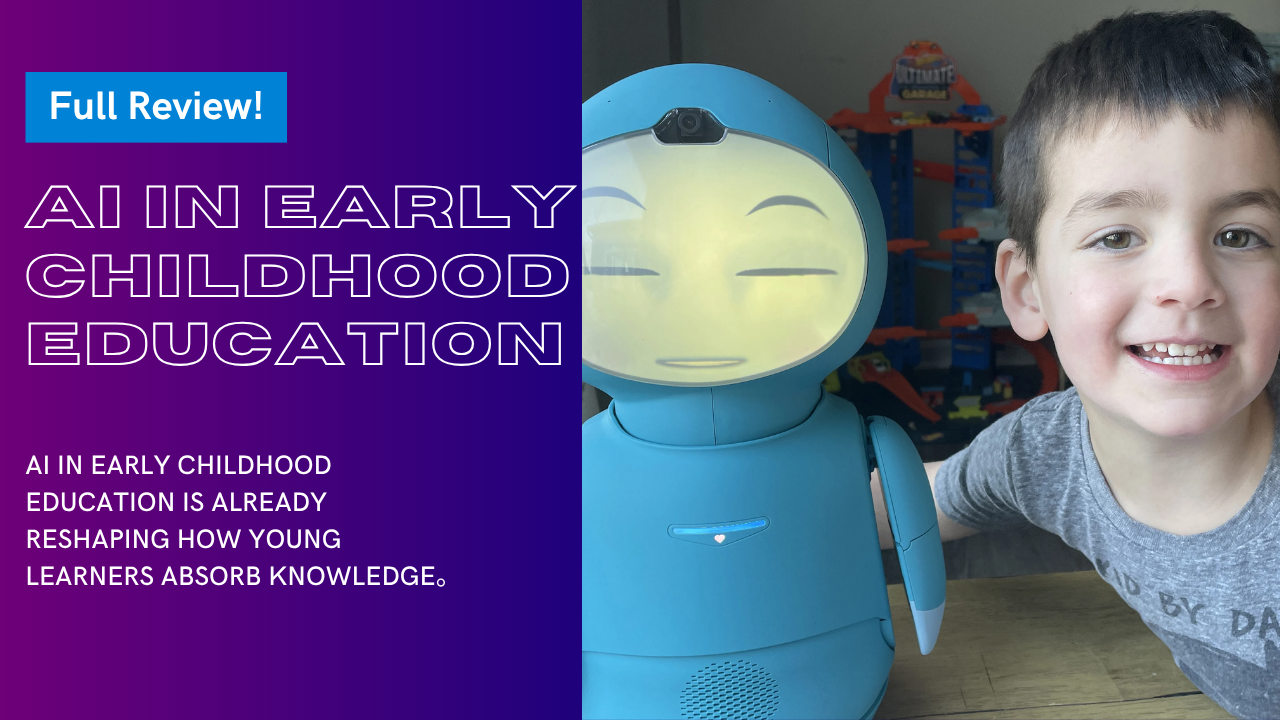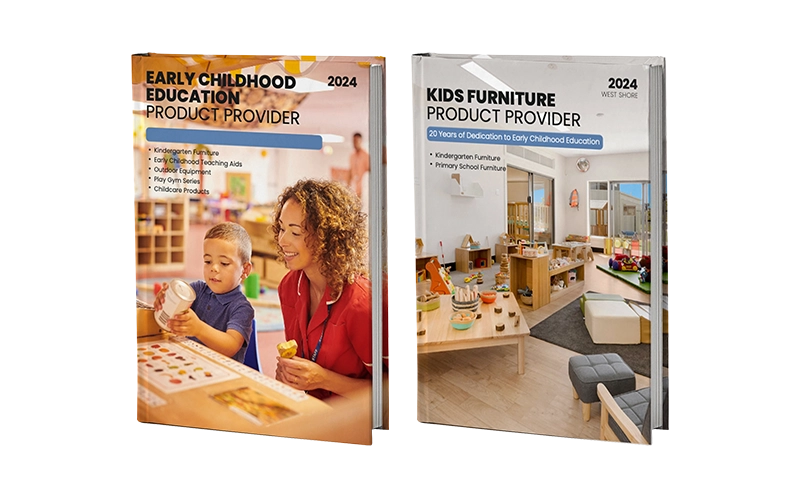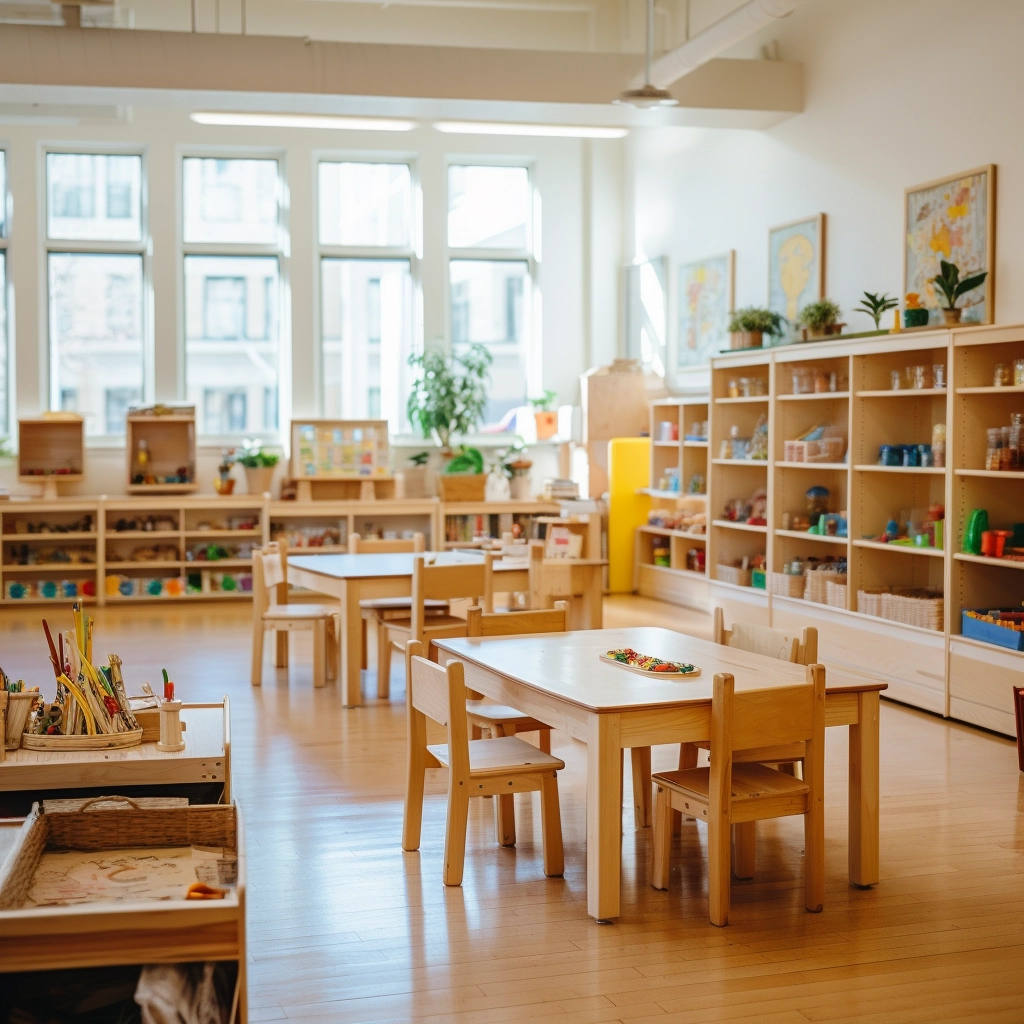Are children learning better with AI?
These questions are no longer speculative. AI in early childhood education is already transforming how young learners absorb information, engage with content, and build foundational skills. The conversation has moved beyond whether this shift will happen—it’s now about how fast.
While the concept may sound futuristic, it’s unfolding rapidly. As Samia Kazi, Middle East Regional Advisor for Childhood Education International, notes, the integration of artificial intelligence into early learning environments is not a distant possibility but an urgent reality. In her article “AI in Early Childhood – Five Things Teachers Need to Know”, initially published in The Blue DOT by the Mahatma Gandhi Institute of Education for Peace and Sustainable Development, Kazi calls on educators to take proactive steps in preparing for this technological shift.
Her insights highlight five essential considerations every educator should understand as AI reshapes the early learning landscape. Let’s explore what this means for teachers, parents, and—most importantly—our youngest learners.

Why Talk About AI in Early Childhood Education Now?
We live in a time when even toddlers can navigate an iPad faster than most adults. Digital natives are growing up surrounded by tech. But AI in early childhood education is not about flashy gadgets—it’s about how machine learning and automation can support real cognitive and social development in children.
Educators, school founders, and even procurement officers like Mark from Canada (one of our most loyal B2B customers) are starting to ask how we can incorporate AI without losing the soul of early education.
AI in early childhood education is not about replacing teachers—it’s about enhancing their ability to reach children where they are, at their level, and with what they need most.

What is AI in Early Childhood Education?
AI in early childhood education (AI ECE) refers to the use of artificial intelligence technologies to enhance teaching, personalize learning, and improve classroom efficiency in early years settings. While AI cannot replace the emotional connection between teacher and child, it can serve as a powerful tool to support educators and enrich the experiences of young learners.
The market for artificial intelligence in ECE is expanding rapidly. A report from Global Market Insights Inc. estimates that the global AI education market will grow from $4 billion in 2022 to $30 billion by 2032. This surge signals a shift in how early learning environments are evolving. As Samia Kazi, Regional Director for Childhood Education International, emphasizes, “We must get engaged and proactive on these topics immediately as educational artificial intelligence is just starting to take its first steps.”
So, how can AI help in early childhood education? Here are several current applications:
- Personalized Learning: AI-powered platforms assess each child’s performance and adjust activities accordingly. This allows children to learn at their own pace, supporting both advanced and struggling learners.
- Interactive Learning Experiences: From gamified apps to AI-driven storytelling and pronunciation tools, AI makes learning more engaging and responsive to each child’s interests.
- Accessibility & Inclusion: Tools powered by AI ECD technology can help children with special needs or language barriers fully participate in classroom activities.
- Early Detection of Learning Challenges: Childhood AI systems can identify signs of developmental delays or learning disabilities, providing teachers and parents with early alerts.
- Classroom Management Support: AI automates administrative tasks like attendance, documentation, and communication with families, giving educators more time to focus on teaching.
In short, AI in early childhood education is reshaping how we approach the early years, not by replacing human connection, but by enhancing it through intelligent, data-informed support.
AI-Powered Tools Already Used in Preschools
You might be surprised to learn that AI in early childhood education is not a futuristic idea—it’s already part of many preschool classrooms today. Below are some real-world tools and systems that are being integrated into early learning environments, blending traditional pedagogy with modern technology:
- KIBO Robots (developed by KinderLab Robotics): These screen-free coding robots are widely used in early STEM programs. Children program them by arranging wooden blocks with barcodes, which KIBO scans to perform sequences. This tactile experience aligns well with Montessori and Reggio Emilia practices by encouraging open-ended, self-directed exploration, while still introducing foundational logic and problem-solving.
- Osmo Learning System: Used in thousands of kindergartens and early learning centers, Osmo combines physical play (like puzzles, drawing, or number tiles) with AI-powered vision technology. The system’s camera “sees” what children are doing on the table and gives real-time feedback, creating a hybrid play-learning experience that is both engaging and highly personalized. This is a leading example of early learning software that uses AI to guide instruction adaptively.
- StoryBots Classroom (by Netflix and Amplify): While not fully AI in itself, StoryBots has begun integrating machine learning features to customize content recommendations based on what children respond to. Some programs now allow teachers to enter a child’s name or learning goal, resulting in personalized songs and animations that boost vocabulary and concept recall, especially helpful in language acquisition and ESL settings.
- ClassDojo: Though widely known for classroom communication and behavior tracking, recent updates to ClassDojo integrate AI-based sentiment analysis. This allows the system to help educators interpret classroom mood trends based on student responses and behavior patterns. It’s used by thousands of preschools globally, including bilingual institutions and Montessori classrooms, as a bridge between educators and families.
- AI-Enabled Interactive Whiteboards: Brands like Promethean and ViewSonic have introduced early education boards with embedded AI. These can recognize gestures, adjust learning content based on attention span and pacing, and allow for multimodal interaction. In some pilot classrooms in Singapore and Finland, these boards are being used in early education robot-assisted lessons, supporting both group collaboration and individual engagement.
Even Montessori-inspired environments, which traditionally favor tactile and nature-based materials, are starting to integrate these intelligent tools in a way that complements—not replaces—their core values. For instance, a Montessori school in San Diego recently introduced Osmo into their literacy corner, using it to support phonics practice while keeping materials self-correcting and hands-on. Similarly, some Reggio Emilia-inspired centers in Australia are piloting voice-based AI assistants that respond to children’s questions during project work, extending the child’s inquiry rather than directing it.
These examples demonstrate that artificial intelligence in ECE is not about turning preschools into digital spaces, but rather about using intelligent systems to enhance observation, support differentiation, and enable more flexible learning pathways, while keeping the educator’s role central.
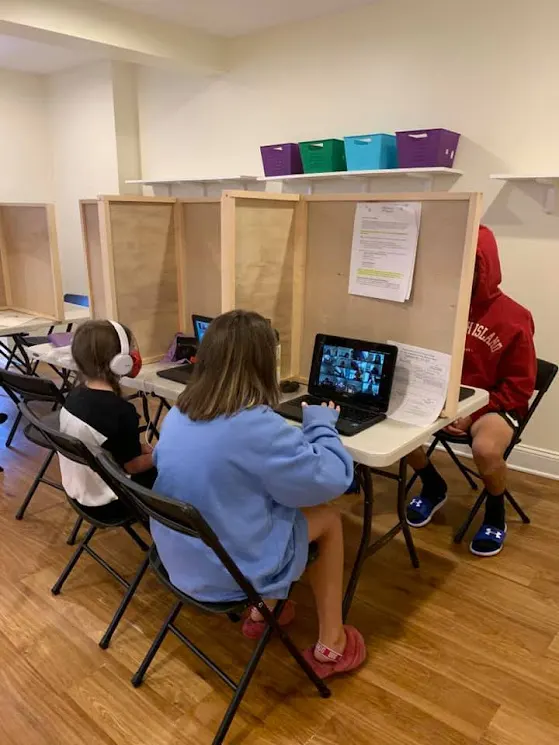
Personalized Learning: The Game-Changer
One of the biggest promises of AI in early childhood education is true personalization.
In the past, teachers had to balance the needs of 20-30 kids with one lesson plan. Now, AI helps identify:
- Which child is struggling with a concept
- Which child needs more advanced material
- How do different learners retain knowledge
This means children aren’t held back or pushed too hard. They’re met at their level. That’s powerful in the critical years of 0–6 when brain development peaks.
A system like SmartyPal reads how a child engages with a storybook and adjusts future books accordingly, which is a perfect example of AI promoting deep engagement instead of passive screen time.
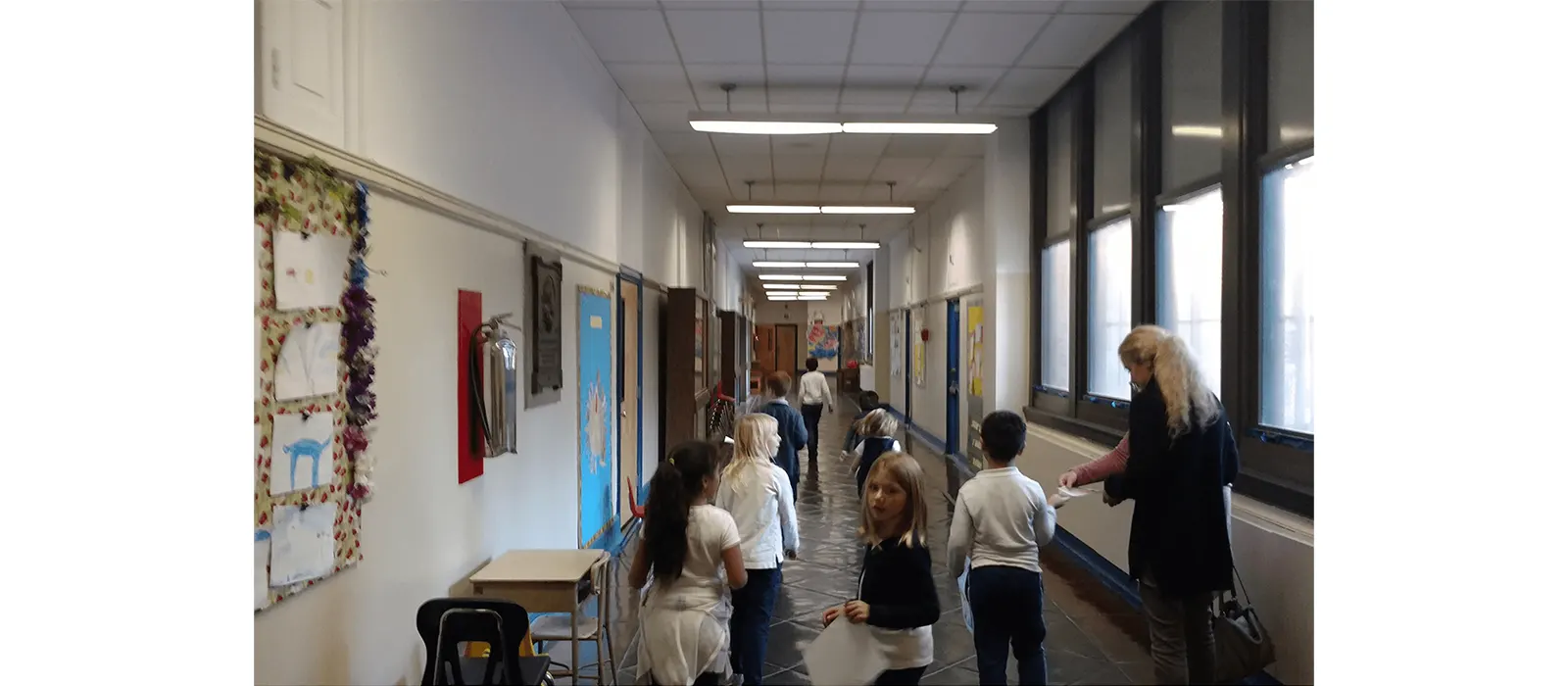
Be mindful of children’s screen time
Parents and educators worry about too much screen time or losing human connection. And they should.
But here’s the key: AI in early childhood education works best as a supplement, not a replacement, for real interaction.
When we help clients design their kindergarten classrooms, we always recommend integrating hands-on play and social learning alongside digital tools.
We believe in hybrid classrooms, where technology supports sensory, collaborative, and movement-based learning. AI doesn’t have to mean isolation. Using wisely can foster communication and empathy by identifying emotions and suggesting group play activities.
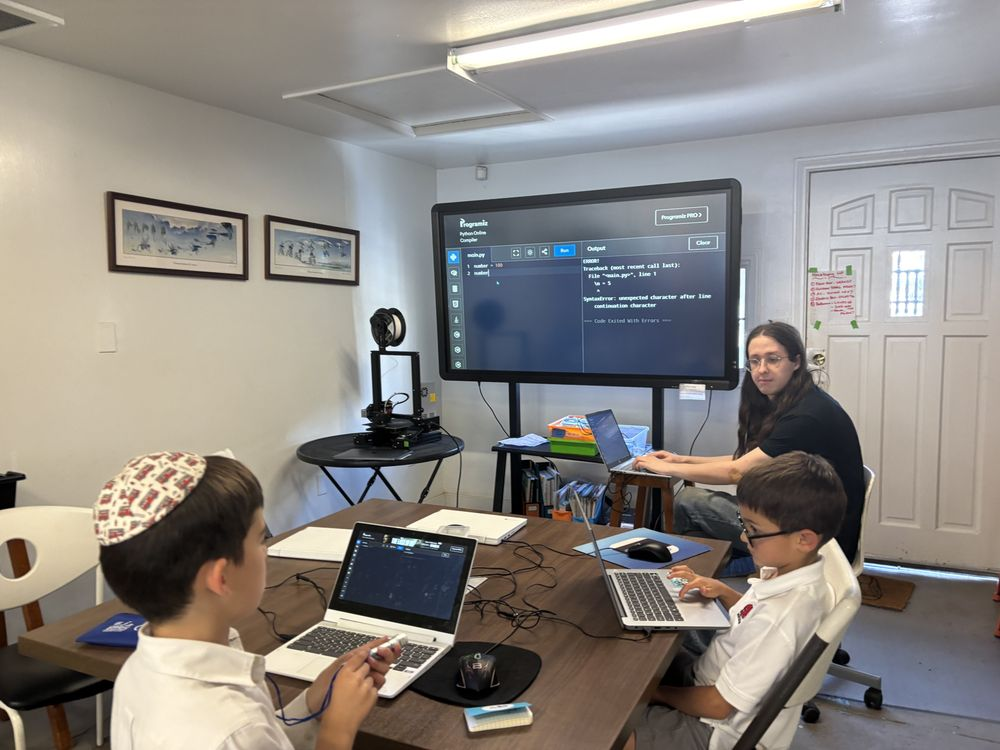
Teachers and AI combine to teach
AI will never replace great teachers. But it can make them even better.
Imagine a teacher starting her day with a dashboard that shows:
- Which children had a tough night (via smart sleep trackers)
- Who is likely to struggle with today’s reading task
- Which kids are thriving emotionally
With that data, teachers can make smarter decisions, plan better activities, and connect more deeply with their students.
AI in early childhood education helps teachers do what they do best—connect with kids.
Challenges and Ethical Considerations
Of course, it’s not all sunshine and screen time. As a CEO deeply invested in the early education space, I always emphasize the responsible use of AI to our clients and partners.
Here are the main concerns:
1. Data Privacy
Young children are vulnerable. Platforms like COPPA (Children’s Online Privacy Protection Act) and GDPR must meet strict regulations if used in Europe.
2. Over-Reliance on Technology
AI should support, not replace, real-life learning and relationships. Overuse can hinder natural play, exploration, and social bonding.
3. Bias in Algorithms
If not designed carefully, AI systems can reinforce cultural or gender biases. Companies and educators must ensure that inclusive, diverse data sets are used in development.
4. Equity and Access
Not all schools have equal access to technology. Budget limitations, infrastructure gaps, and limited staff training can prevent many kindergartens, especially in rural or developing regions, from benefiting from AI tools. Educational technology providers and policymakers must focus on creating affordable, low-tech AI solutions that can be scaled and implemented even in resource-constrained environments. Equity must be a core priority to ensure no child is left behind in this digital shift.
Let’s not forget that technology reflects the intent behind it. AI in early childhood education must be grounded in empathy, equity, and ethics.
What the Future Holds for AI in Early Childhood Education
Where is this all headed?
In the next 5 to 10 years, I believe we’ll see:
- AI-powered teacher assistants in every classroom
- Multilingual real-time translation for diverse communities
- Emotion-sensing learning platforms that adapt not just to skills but to moods
- VR/AR learning worlds enhanced by AI to simulate real-world experiences
- AI-powered classroom design tools to build child-centric environments based on developmental data
Many forward-thinking early education providers are exploring combining ergonomic preschool furniture with smart learning stations, creating classrooms that support hands-on play and digital learning.
The best part? This kind of technology is becoming more affordable and accessible worldwide. Even schools operating on tighter budgets can now begin integrating AI into their learning environments without sacrificing quality or overspending.
Conclusion
AI in early childhood education isn’t just a trend—it’s a transformation. When used wisely, it empowers teachers, engages children, and prepares the next generation for a brighter future.
As this shift continues, having the right environment to support both traditional learning and emerging technologies becomes increasingly important. That’s where experienced partners can make all the difference.

